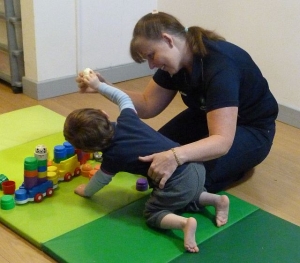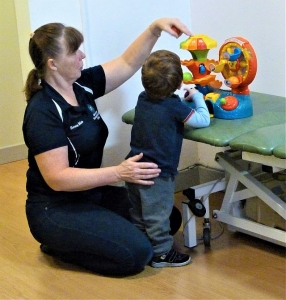Physiotherapy for Cerebral Palsy (CP)
Theresa McGinn has huge experience in treating children with all neurological conditions, including cerebral palsy. After working as a Senior Physiotherapist in Neurology in Cork, she came to Kilkenny and worked in Enable Ireland (The O’Neill Centre). Through working in both of these areas, Theresa has gained huge knowledge on both neurological conditions and how to treat them in children.
Theresa also ensures that all new staff in Kilkenny Physiotherapy & Sports Injury Clinic are trained up in the treatment of young children with neurological issues such as cerebral palsy.
What is Cerebral Palsy (CP)?
Cerebral Palsy is a neurological condition which is caused by brain damage to the immature brain. This can be caused in the womb, at birth or in the first 2 years of a child’s life. It can effect muscle tone, movement, co-ordination and motor skills. It can present in a number of different forms.
What are the different types of Cerebral Palsy?
CP can be classified into 3 groups, depending on the areas affected;
- Quadriplegia – affects 4 limbs
- Diplegia – affects both legs
- Hemiplegia -affects one arm and leg
It can then be further classified into 4 groups depending on how it presents;
- Spastic CP: is the most common type and results in stiff muscles and exaggerated reflexes.
- Hypotonic CP : where the muscle tone is decreased so the body becomes floppy
- Dyskinetic CP: can be characterised by involuntary, slow movements of the limbs, or the trunk movements may be more affected than limb muscles causing a twisted posture
- Ataxic CP: where voluntary muscle movements are not well coordinated
CP can also present as any combination of the above.
How can physiotherapy help Cerebral Palsy?
Physiotherapists can help children with cerebral palsy get the most from their bodies in a number of ways. The treatment approach is based on the knowledge that the nervous system within the body is neuroplastic, that means it has the ability to change and grow, and to regenerate nerves.
It utilises the fact that the brain responds to input, so if the body is repeatedly taken through normal movement patterns, the brain may come to recognise these as normal movement patterns, and so respond by growing neural pathways to control these normal movement patterns. Treatment usually involves a mixture of manual therapies and exercises, depending on how each individual child presents.





